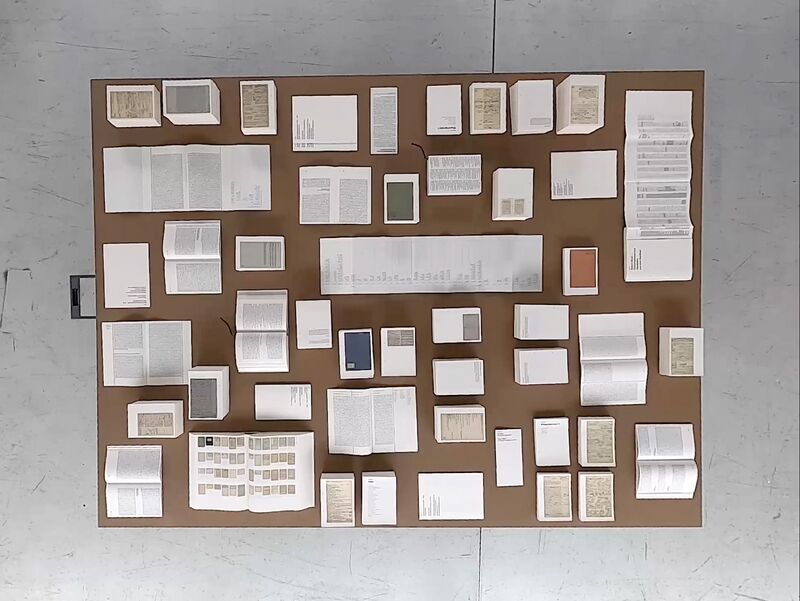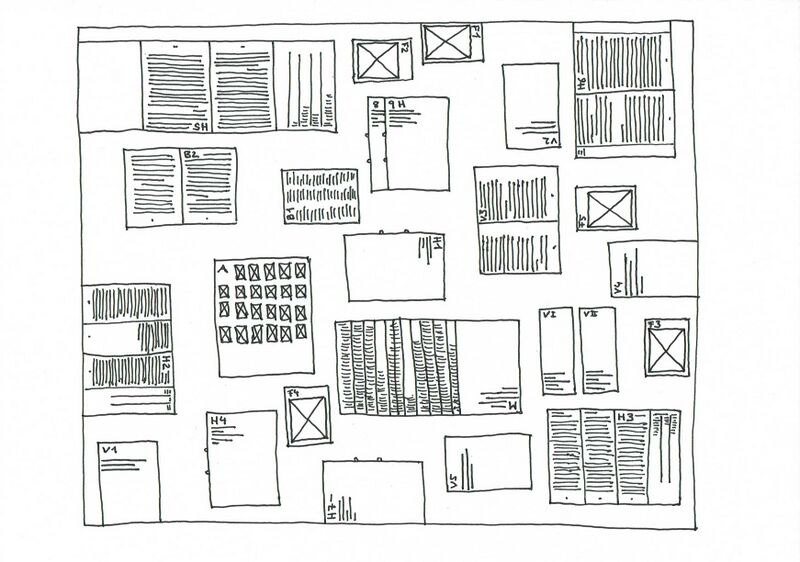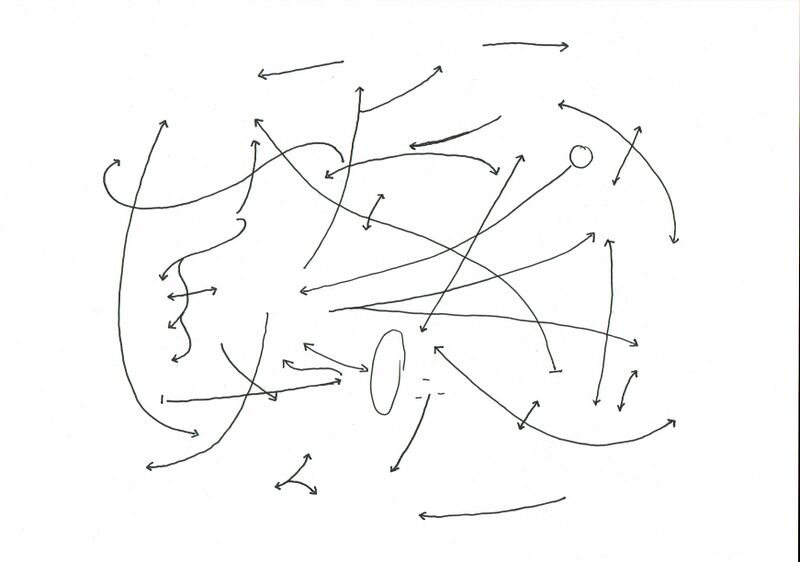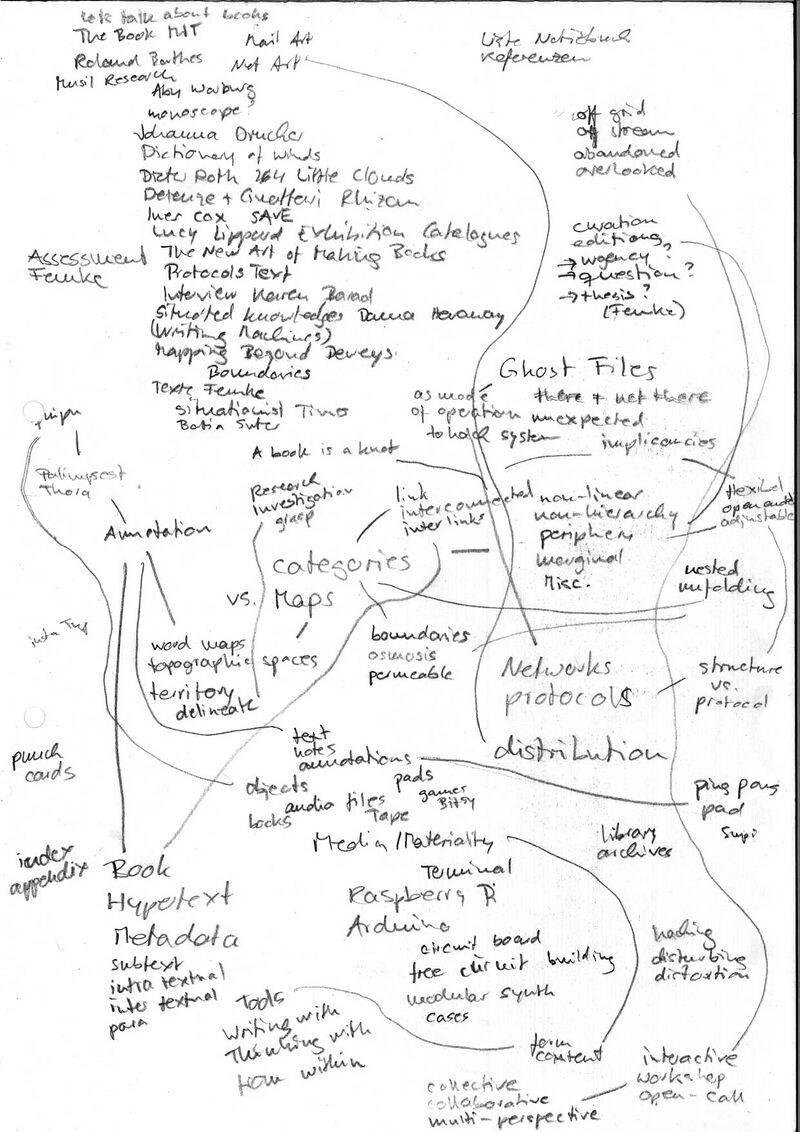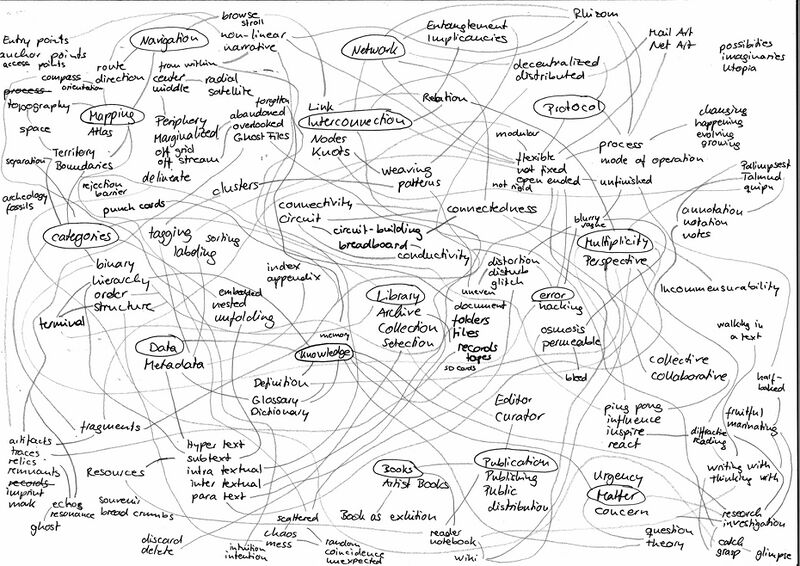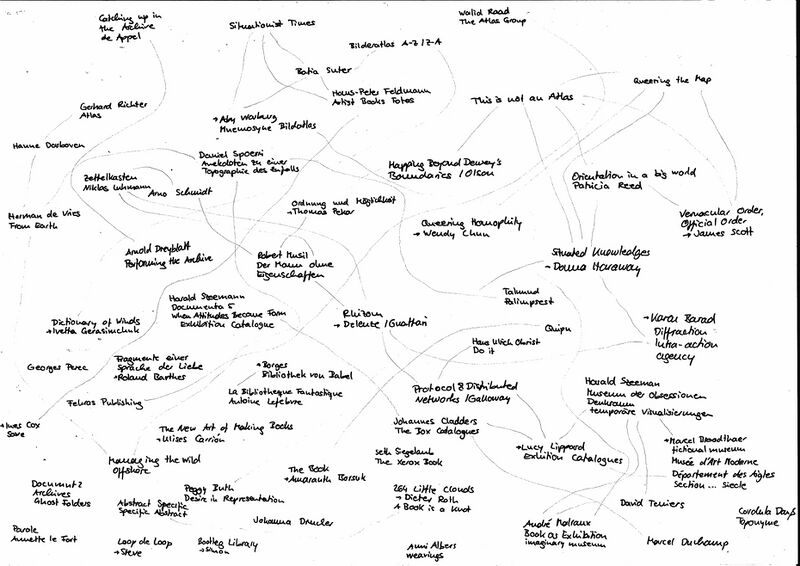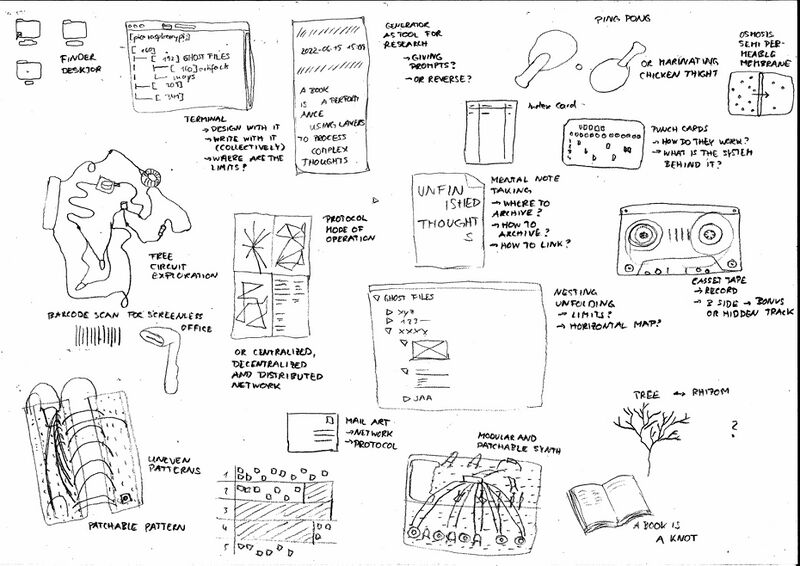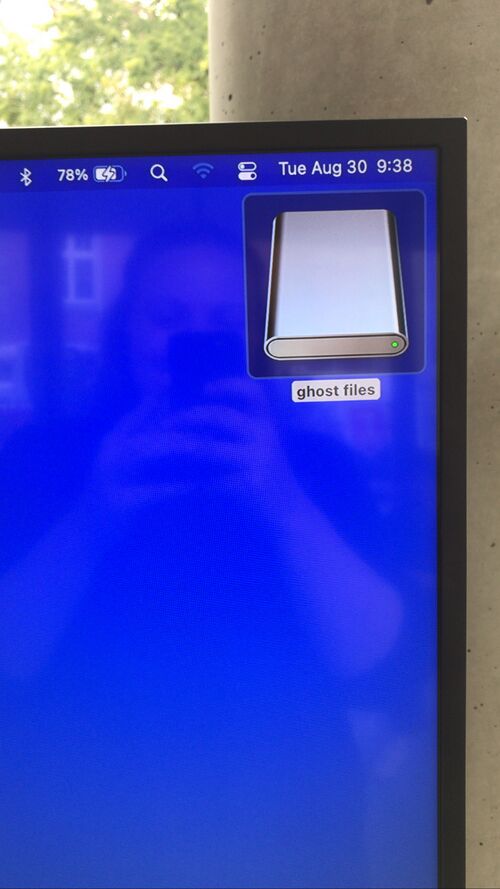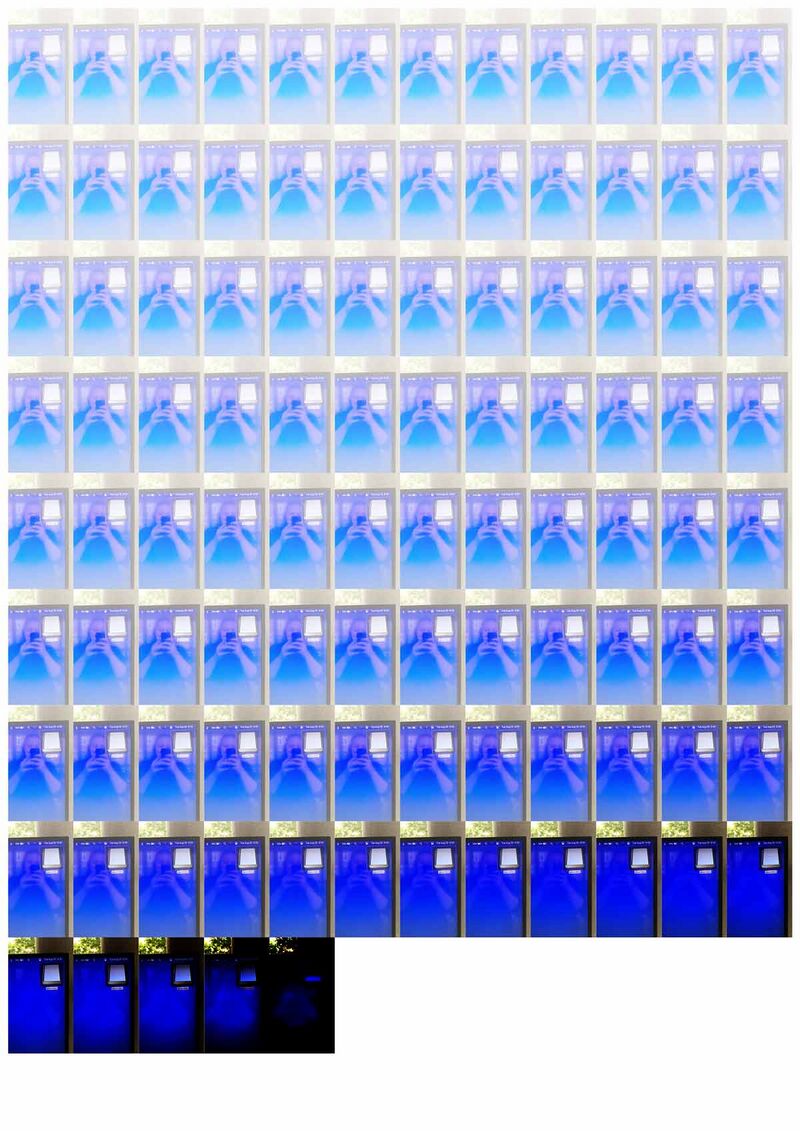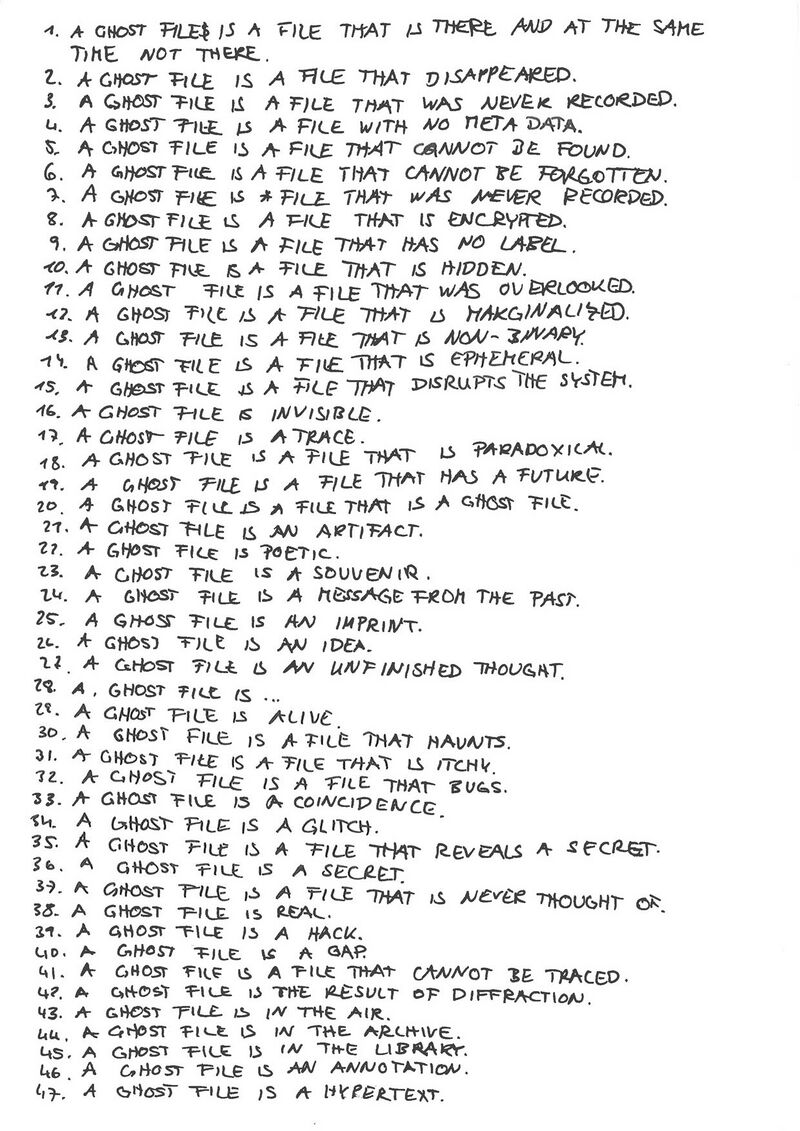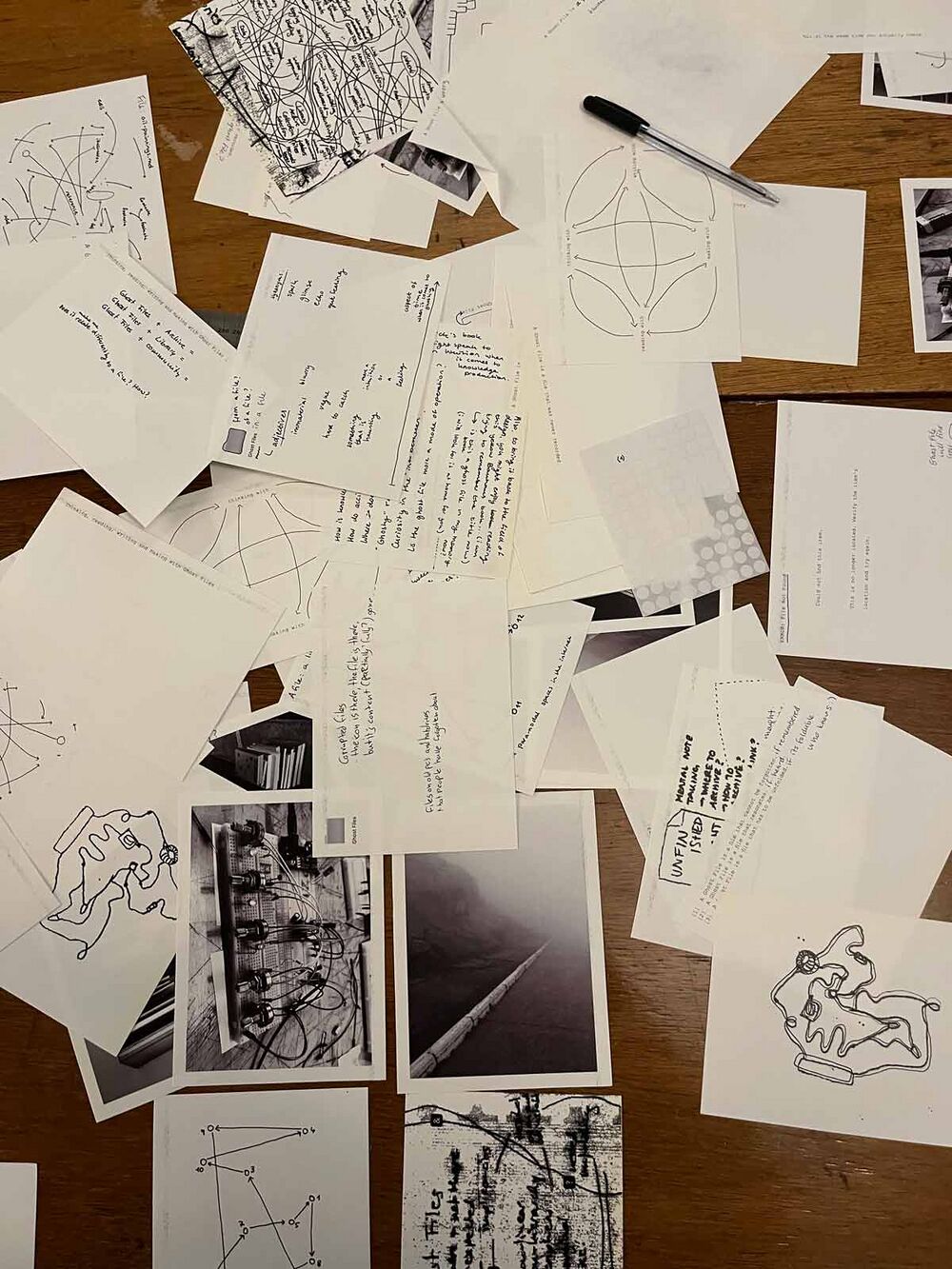User:Ohjian/XPUB 2
YEAR 2
Graduation Project
Getting Started
Previous Practice
Book Making
As a graphic designer with a strong love for printed matter, making books – i.e. thinking, editing, designing and publishing books – is my practice. I have always been interested in the book as the supposedly most complex structure when it comes to printed material. But to me the term has never been limited to the codex, which is the most common form of the book in Europe. The ancient clay tablet, the papyrus scroll and even the quipu, which is essentially a system of knotted strings, are considered to be historical forms of the book and actually I think that all kinds of printed matter can be subsumed under the term as well. They include a broad variety of materials, tools, binding methods and publishing processes. Accordingly the book could take any number of forms, and instead of treating it as a transparent container I believe it should be shaped by the needs of its content.
A few years ago I had to recognize that in some cases there are needs that go far beyond the book, regardless of how broad your definition of the medium may be. Working with the literary estate of the author Robert Musil as part of a scholarship, I found myself confronted with a rather complex structure of text and hypertext.
I had to realize that its sheer diversity and extent required a new approach to my practice. This led to creating a large array of books, folders, fanfolds and lose leaf collections, resulting in an extensive network of printed matter with interconnecting nodes and links.
To make this experimental edition accessible, all the different parts had to be spread on a surface. It was only then that the interspaces, the surface itself, the exhibition room and even the reader choosing a path through the non-linear text became part of the publication.
Example: »The Mistake of this Book is to be a Book«, 2020
This work is an approach to the literary estate of the Austrian author Robert Musil, taking into account the findings of literary studies and philology yet emphasizing the perspective of my book making practice. It started as a graduation project and was further developed and realized as part of a two-year scholarship.
With his project »The Man Without Qualities« Musil initially aimed for a two-part novel. Whereas the first part was published in 1930, the second part was never completed and ultimately remained a fragment. Over the years Musil discovered the sheer infinite possibilities of how to finish the novel. His excessive writing process resulted in numerous varying drafts for the missing ending, equally existing in his archive and spanning a network-like structure of text and hypertext. The author´s estate comprises around 12,000 pages, including numerous chapters, drafts, notes and remarks as well as essays, diary entries, lists and correspondences.
After thoroughly examining, sorting and rearranging the material I created an extensive network of various printed matter, including books, folders, fanfolds and lose leaf collections. This process made me question the limited understanding of the term book and led to a broader sense of the word. The project evolved into an exhibition, considering the exhibition display, the space and interspace as well as the body experiencing the text as integral parts of the experimental publication.
The main issues of interest in this project were:
1) Musils concept of the Möglichkeitssinn (sense for possibilities):
In one of the first chapters of „The Man Without Qualities“ Musil introduces his concept of Möglichkeitssinn (sense for possibility) versus Wirklichkeitssinn (sense for reality). Both seem to exist: the sense for reality in a person who understands that things are what they are, and the sense for possibility in a person who recognizes that things are what they are, but also they could potentially be different.
In the beginning of the novel the protagonist appears to be a person with sense for reality, which has a strong impact on his life: He joins the military and becomes part of a strict and rigid structure that is hierarchical and produces boundaries and limitations rather than space for possibilities.
Gradually and over a long process the protagonist leaves these fixed structures behind and becomes a person with a great sense for possibilities, questioning the limitations of the past and exploring possible futures instead.
Interestingly the author himself seems to go through a parallel evolution: When he started to write the novel there was the idea of a two part series, where both volumes should be similar in size and length. The second part was supposed to be written and published two years after the first one. But this never happened. Instead Musil spent 12 years, until his death, on writing for the second part, which finally remained a fragment.
Over the years Musil discovered his own sense for possibilities, resulting in various drafts for the missing ending that equally exist in his archive. Since the drafts have various interconnections and no hierarchy, more and more possibilities emerge, not only in the texts themselves but also through their relation to each other.
This brings me to the second main issue which is …
2) Structure as sense of possibilities
The concept of structure is often associated with the act of organizing, sorting, selecting, categorizing. These actions can be (and actually are often) used in a violent or harmful way.
[Keywords: tree, hierarchy, patriachy, capitalism, colonialism, centralized network, marginalization …]
But structure in itself just describes the arrangement of and relations between the parts or elements of something complex. This concept doesn’t have to be strict, rigid, hierarchical or linear. A structure might as well be fluid and in a constant state of becoming, caring for relationalities and what emerges through them.
[Keywords: entaglement, implicancies, intra-action, rhizom, distributed networks, feminism, intersectional, non-binary, animacies …]
Some structures might be destructive, especially when they are strict in their categorization and imposed onto something. On the other hand structures often are necessary, creating not only limitations but also space for possibilities.
3) Limitations and potential in the structure of the book
The term book is often used as a synonym for the codex. This specific form of the book comes with a specific structure: a front and a back cover, a spine, the double-page spread, the sequence of pages. It is linear, fixed through binding and rigid since every content has to fit on a page. There is still some room for variation in the structure, for example the size and the number of pages that vary from book to book.
But how is it possible to go beyond these limitations of the book, and is it still a book then? How could the structure be adapted to be able to support such entangled content and material as you would find with „The Man Without Qualities“?
In this case the structure went from the codex to a horizontal, non-linear, open ended, flexible and interconnected tableau with various forms printed matter, ranging from books, folders, fanfolds and lose leaf collections to maps. There is no beginning nor ending and the reader finds themselves situation within, following (or not) links between the elements of the edition to find their own path through the text.
I am wondering:
How can I integrate structures into my life and practice that are inviting possibilities, the unexpected, the overlooked?
Workshop Hosting
The combination of structure and possibilities also relates to my workshop hosting practice.
In a workshop a provide a certain structure that creates a space for things to happen. The structure can for example include a theme, schedule, a workshop script, prompts and exercises, a location or actual space, a number of participants, small tutorials and an idea for a final outcome.
All these parameters of the structure are carefully curated and balanced out, so that they hopefully create this space for possibilities.
Example: Summerschool 2022 – Ghost Files
1) Protocols:
For the Summerschool 2022 I prepared so called protocols. Each student was assigned a number and following the protocol they had to send a postcard to another student in the room. Depending on the protocol the other student would annotate on the postcard and either send it back to the first person or maybe to a third person in the room.
This structure that the protocol provided enabled conversation and collaboration in the group and helped the students to bring in an element of surprise, of the unexpected.
2) Multi-perspectivity:
Another structure that played an important role was the idea to bring 12 different perspectives together to try and delineate a topic together. Next to the collaborative aspect of the protocols there was also enough space for individual work, so that every participant could follow their own approach and elaborate a situated angle on the theme. These different perspectives would be brought together in the final outcome, providing a thorough collective investigation.
3) Format:
The final format for the outcome was another structure I provided: A book in sheets, ready to be rearranged, filed, exhibited or even discarded. It invites the reader to think along, follow their own path through the material and to add their own annotations and thoughts, some speedy drawings or items to the collection. Depending on order and arrangement of the cards, again new possibilities arise from within the material.
Publishing Process
For years I have worked in the context of publications, but just recently I realized how feel comfortable and experienced with some very specific roles in this practice, whereas other are rejected. Roughly you could divide the publishing practice into three main stages:
a) Hosting: initiate a publication; provide a space, a topic, prompts; invite others to create material
b) Creating: produce textual or visual material to be published
c) Curating: select, organize, arrange the material; design the publication
Previous to XPUB I have mostly positioned myself either at the beginning or at the end of this process: As a workshop host I would initiate a project and provide a structure and space for students to create material. As a graphic designer I would organize, edit and design pre-existing material to curate a publication from it.
The new role I want to explore starts from the middle: Accompanied by the familiar processes of hosting and curating I now also want to create material for a publication. By integrating all three roles into my work I aim to trigger an iterative process towards a more entangled, less divided publishing practice where hosting, creating and curating shape and inspire each other.
Maybe this again relates back to structure:
When hosting or curating I am mostly a bird, overlooking the whole structure with all its elements and connections.
For the process of creating I may have to shift this perspective and position myself inside of the structure, only seeing what unfolds right in front of me.
Mappings
This is a first draft. I am trying to map my interests.
Mapping Keywords
This is an attempt to lay out all keywords that are present in and important for my past, current and future practice. I want to find out how all these things relate to each other, how they connect.
Mapping Related Resources
Here I am trying to map all related resources (texts, artworks, artist books etc.) that come to m mind while thinking with the keywords in the precious map.
Mapping Prototypes
In this map I collect visual sketches of my recent experiments, prototypes and projects that relate to the keywords map. They all have certain aspects I am curious about and that I want to explore further.
Annotated Bibliography / References
| Author/Artist | Title | Category | Keywords | Synopsis | Quotes | Link |
|---|---|---|---|---|---|---|
| Lucy Lippard | 557,087 / 955,000 / c. 7,500 / 2,972,453 | artist book / exhibition catalogue | dematerialization of the art exhibition, mail art, non-linear, non-hierarchical, mix of documentation and conceptual art | new approach to the exhibition catalogue where the book itself becomes the exhibition | "each catalogue was an envelope of loose note cards containing statements, documentation and conceptual works by each artist, to be rearranged, filed or discarded at will. If Lippard described Conceptual art as the dematerialization of the art object, these catalogues effectively announced the dematerialization of the art exhibition. (One reviewer claimed Lippard had been the artist, and that her medium had been other artists.) " | Link |
| Dieter Roth | 264 Little Clouds | Artist Book | conversation through handwritten prompts or questions and drawings as answer or reaction to it | |||
| Marcel Broodthaers | Musée d'Art Moderne | Exhibition | fictitious museum, miming institutional approach, playing with roles (artist, curator, museum director etc.) | "… a work of fiction allows you to capture reality and at the same time what it conceals" | ||
| Peggy Buth | Desire in Representation | Artist Book | artistic research, interplay of fact and fiction | |||
| Robert Musil | The Man Without Qualities | Novel | sense for possibiliy, structure and possibility | |||
| Ines Cox | SAVE | Artist Book | ||||
| Batia Suter | Artist Book | |||||
| Hope A. Olson | Mapping Beyond Dewey´s Boundaries: Constructing Classificatory Space for Marginalized Knowledge Domains | categorization, boundaries, paradoxical space | ||||
| Donna Haraway | Situated Knowledges: The Science Question in Feminism and the Privilege of Partial Perspective | situated knowledges, multiperspectivity | situated knowledge instead of absolute knowledge / who decides what matters? | |||
| Karen Barad, Adam Kleinmann | Intra-actions | Interview | how matter comes to matter / entanglement and intra-action / diffraction | |||
| Gilles Deleuze, Felix Guattarí | Rhizom | tree, rhizome, structure as a process of becoming | ||||
| Alexander R. Galloway | Protocol. How Control Exists after Decentralization | distributed networks and protocols as process of becoming | ||||
| Robert Musil | The Man Without Qualities | novel | Möglichkeitssinn, sense for possibility | reality awakens possibilities, but it will always be the same possibilities, in sum or on average, that go on repeating themselves / until someone gives the new possibilities their meaning, their direction | Link | |
| Colin Davis | Hauntology, spectres and phantoms | |||||
| Jacques Derrida | Spectres of Marx | Ontology and Hauntology | ||||
| Patricia Reed | Orientation in a Big World: On the Necessity of Horizonless Perspectives |
Project Proposal
Last update: 2022/11/17
1. What do you want to make?
My project shall be an investigation into Ghost Files and the question of „How does matter emerge?“ or „How can matter find its way into our shared existence and towards imaginary futures?“
The term Ghost Files, that has no official meaning or definition, will function as the entry point, the lens and the mode of operation for this artistic research process. It delineates the liminal space of becoming, where Ghost stands for something vague and immaterial whereas Files represent something concrete and tangible. This ambiguity of Ghost Files opens up a paradoxical terrain of (im)possibilities, oscillating between the no-more and the not yet, between nothing and everything at the same time.
The outcome of this investigation shall be a (printed) publication, that itself becomes a space where matter emerges: It remembers, collects, arranges and curates matters of concern around the idea of Ghost Files. In a process of empirical becoming and researching it manifests itself in temporary visualizations, ready to be re-thought and re-formulated again.
2. How do you plan to make it?
These reconfigurations, (re)articulations and en/foldings of matter are strongly connected to the question of structure and possibility.
The idea of structure as something that describes the arrangement of and relationalities between elements ranges from rigid hierarchical categorization to ever-changing and boundary-crossing entanglements. Each structure comes with certain limitations, but it also has the potential to create a space for possibilities, for new matter to emerge.
I imagine this project to be an intimate attempt, providing various structures for myself and others to explore this unknown terrain of (im)possibilities around the idea of Ghost Files. I want to experiment with diffractive ways of thinking, reading, writing and making to provoke new possibilities while blurring the boundaries between disciplines as well as roles (hosting, creating, curating) and approaches (individual, collective, fictional, factual, scientific, poetic).
3. What is your timetable?
1) Hosting structures for myself and others to create material while thinking, reading, writing and making with Ghost Files
Examples:
– Public Moment at Leeszaal: I prepare a bunch of postcards with thoughts, sketches, photos … around the idea of Ghost Files and invite the public for a collective annotation session. They react to or intervene with the content of the cards and by writing, drawing on them they create a new starting point for a next person.
– Ghost Files – Circuits in a diffractive making session I try to understand electronic circuits and Ghost Files through one another. A circuit seems to be technical, logical things. Depending on the components you use and how you connect them, you can calculate the outcome. But in practice, things are much more vague and indefinite. So I try to build a circuit, embracing the element of surprise, the unexpected.
– Ghost Files – Definitions In a stream of (un)consciousness session I write down every possible definition for Ghost Files that I can think of. Within 20 minutes of writing I come up with 118 ideas of what Ghost Files could be. Together they help to delineate and further explore the term.
2) Documenting and archiving the material that emerges through the given structures
– notes, annotations, reports, lists, short stories, instructions …
– correspondences, conversations …
– drafts, schemes, prototypes, photos, scans, drawings, mappings …
– logs, data, meta data, code …
3) Curating and editing the material
Analyze, sort, select, connect, arrange, combine and shape the material to curate yet another structure where new matter emerges
4) Prototyping the publication
Plan and design the structure and layout of the publication
5) Producing the publication
Print and assemble the publication
4. Why do you want to make it?
Structure is immanent to our life and it impacts not only the past and present but also the emergence of (im)possible futures and the process of becoming. I want to explore the interdependencies of structure and possibility through the term Ghost Files, which will function as a subject matter, a starting point and filter for this investigation.
Ghost Files is an undefined term that comes with the invitation to fill it with knowledge, meaning, matter … It directly speaks to the theoretical context of structure and possibility but at the same time could allow for fictional, poetic and situated narratives. The ambiguity of the words Ghost and Files creates a friction, a structure in itself that provokes a spectrum of (im)possibilities.
I hope that thinking, reading, writing and making with Ghost Files helps to understand, reveal and potentially subvert, infiltrate, haunt and hack some existing structures and conditions as a gesture towards a more open, distributed and experimental approach to publishing.
5. Who can help you and how?
6. Relation to previous practice
My practice has always been situated in the realm of graphic design and printed matter, evolving around the question of structure: network, interconnection, multiperspectivity and non-hierarchy are just a few of the keywords that have been present throughout my work. (see: previous practice)
Structures also play a big role in my workshop hosting practice, and I am curious what possibilities emerge through them.
These main interests have also been present throughout my first year in XPUB, and I am excited to further explore them, bringing in new skills and tools that recently found their way into my practice.
At the same time I also want to try a new role in this project. The production of matter in the context of print publishing could be roughly divided into three different roles or stages of a project:
a) Hosting: initiate a publication; provide a space, a topic, prompts; invite others to create material
b) Creating: produce textual or visual material to be published
c) Curating: select, organize, arrange the material; design the publication
Previous to XPUB I have mostly positioned myself either at the beginning or at the end of this process: As a workshop host I would initiate a project and provide a structure and space for students to create material. As a graphic designer I would organize, curate and design pre-existing material to form a publication from it.
With this project I want to explore a new role and start from the middle: Accompanied by the familiar processes of hosting and curating I now also want to create material for a publication. By integrating all three roles into my work I aim to trigger an iterative process towards a more entangled, less divided publishing practice where hosting, creating and curating shape and inspire each other.
This shift of roles also requires a shift of perspectives: While the roles of hosting and curating often go hand in hand with an overview of the whole, now I also want to position myself within the structure, strolling through this uncomfortable territory of mess and see what possibilities for creating arise from there.
7. Relation to a larger context
8. References/bibliography
Thesis Outline
Last update: 2022/11/17
A Speculative Investigation into the Idea of Ghost Files
Table of Contents:
1) "A Few Possible Beginnings"
- "How to delete a Ghost File"
- Anecdote of a Google search for the term Ghost Files and its only result, which is a step by step instruction on How to delete a file after error messages »cannot delete file« or »file not found« in Windows 10 and 11
- "About the Forgotten and the Overlooked, the Unexpected and the Unfathomable: An Associative Exploration of an Undefined Term"
- Introducing Ghost Files as a term with no definition (or every possible definition): Make connection to the anecdote of the google search and how there was no other results to be found; Explain how it seems tempting to use this ”open” term as a metaphor, yet to be filled with matter or meaning; first short introduction of Ghost as something vague and immaterial and Files as something concrete and tangible; Explain how this ambiguity of Ghost Files opens up an unknown terrain to be explored
- First thoughts and ideas of what Ghost Files could be: something that is there but at the same time not actually there; hard to grasp; how to trace the untraceable?;
- Keywords: overseen, overlooked, abandoned, dislocated, misplaced, marginalized, minor, ephemeral, haunting, unexpected, mistaken, misunderstood, coincidental, accidental …
- "Delineating Ghost Files"
- the term Ghost:
- etymology, context
- how it could be understood for this research: not as something obscure or spiritual, but rather as a reminder of the unknown, the unpredictable, as anti-realist and radical fiction …
- the term Files:
- etymology, context (the German word for file ”Datei“ is a portmanteau word, a blend of the two words ”Daten” = data and ”Kartei” = index, catalogue)
- how it could be understood for this research: a file as a document, record or proof that can be filed, following specific criteria of a sorted catalogue
- the term Ghost Files:
- Paradox, ambiguity, fissure, spectrum
- Ontology vs Hauntology: ontology as the study or knowledge of being, presence, or reality vs. hauntology as concerned with non-being, absence, and unreality
- the term Ghost:
- "Thinking with Ghost Files"
- Invitation to think with Ghost Files:
- Explaining how the term (even though or because it is yet to be defined) is useful in this research: as entry point to unknown territories, as filter or specific angle to change perspective, as mode of operation or motto for the undertaking
- Explaining how thinking with Ghost Files could be relevant or useful (for example to open up new thinking spaces, to look at things differently and reveal something that is normally concealed, or to use its openness and ambiguity as driving force)
- "Catching Ghost Files or The Conditions and Implications of Structure"
- How not to catch Ghost Files: A few (im)possible scenarios
- Anecdote 1: I schedule an appointment for myself to catch a Ghost File. I prepare everything in advance: Cleaning my desk of everything unnecessary, having some blank pages and a pen ready, making sure that nothing will interrupt me. I sit down in order to catch a Ghost File. The Ghost File doesn’t appear, so I try harder. It seems impossible!
- Anecdote 2: I am walking the streets to meet a friend, passing by this store. In the window display I see a vase that I know my friend would like. So I try to take a picture and send it to him. I need a few tries, because for some reason the photos don’t show the vase, but rather a reflection of me taking the picture, of the people in the street and the clouds in the sky. Finally I manage to adjust the settings. I send the vase to my friend and delete the other photos.
- Explain how these two scenarios relate to the conditions and implications of structure: example one has a very rigid framework that seems to give orientation and support, but it doesn’t allow for unexpected things to happen. Example two provides no structure at all, at least not related to the idea of catching Ghost Files. It focusses on something else completely and the Ghost Files that appear are just a byproduct, meant to be overseen and forgotten.
- Introducing the main thesis of the research: The idea of Ghost Files can help to understand the limitations that structures create but also to (re)imagine structures that provide possibilities
2) "Structure and Possibility"
- What is structure
- Definition, etymology, simple examples in everyday life
- "How Structure Creates (Im)possibilities"
- Robert Musils concept of ”Sense for Possibility” and how it connects to structure on the example of the novel ”The Man Without Qualities”
- from rigid hierarchy to rhizomatic re-configurations, explaining the boundaries and limitation as well as the possibilities they create
- Different Aspects of Structure:
- "Structure as a Noun"
- a specific arrangement of elements / describes a status quo / fixed boundaries and classification, often hierarchical, rigid
- "Structure as a Verb"
- the arranging of elements / implies there is a state of un-structure and the final goal is structure again as a noun
- "Structure as Conjunction"
- and/or, focus on relationalities, the connecting element, the space in-between elements / ongoing re-configurations, no beginning, no end
- "Structure as a Noun"
3) "Re-thinking Structure and Possibility with Ghost Files"
Re-formulating the idea of Ghost Files and how it could help to re-think structure and possibility
- "Ghost Files as Matter of Concern"
- Explain the difference between matter of fact and matter of concern (not absolute knowledge but situated knowledges)
- Suggest that there is not one but various accurate definitions for the term Ghost Files (depending on perspective, context, needs etc.)
- Explain how this relates to the idea of structure as noun (absolute knowledge), but transforms it into temporary definitions that can exist in parallel and that can be re-configured any time
- Possible references: Donna Haraway: Situated Knowledges, Karen Barad: Intra-action, Patricia Reed: Orientation in a Big World
- "Ghost Files as A Paradoxical Space of Becoming"
- The paradox (Ghost vs Files) as in-between space / the liminal space of becoming
- Paradox as a spectrum of (im)possibilities
- oscillating between the no-more and the not yet, between nothing and everything at the same time.
- Paradox opens up unknown territorie(s) of (im)possible futures
- Explain how this relates to the idea of structure as verb, but here the focus is not only on the process of becoming, but also on the space that needs to be provided for it to happen. The idea of oscillation within a spectrum also suggest that there is no beginning or ending to this process
- Possible references: Hope A. Olson: Mapping Beyond Deweys Boundaries
- "Cutting together/apart Ghost Files"
- Cutting together/apart Ghost … and … Files, as a holding-together of the disparate itself
- Diffraction: Think with Ghosts about Files / think with Files about Ghosts
- But also think with Ghost Files about structure, their limitations and possibilities
- Explain how this relates to the idea of structure as conjunction, …
- Possible references: Karen Barad: cutting together/apart, diffraction
4) "A few Possible Endings or How to Befriend Ghost Files"
- Ghost Files as a Possible Mode of Operation Towards Imaginary Futures
- How to Befriend Ghost Files and scrap Beginnings and Endings
- relation to practice, unfinished thoughts, invite others and the unexpected in, temporary materializations
- Ghost Files as a gesture towards an open, distributed and experimental approach to publishing
7) Bibliography
- Karen Barad: "diffraction-reflection" in: "Meeting the Universe Halfway: Quantum Physics and the Entanglement of Matter and Meaning"
- Karen Barad, Adam Kleinmann (2012): “Intra-actions” (Interview of Karen Barad by Adam Kleinmann)
- Gilles Deleuze and Felix Guattarí: Rhizom
- Donna Haraway: „Situated Knowledges: The Science Question in Feminism and the Privilege of Partial Perspective“
- Robert Musil: The Man Without Qualities
- Hope A. Olson: „Mapping Beyond Dewey´s Boundaries: Constructing Classificatory Space for Marginalized Knowledge Domains“
- Patricia Reed: "Orientation in a Big World: On the Necessity of Horizonless Perspectives"
Mode of address: academic essay with anecdotal passages
The thesis will focus on the theoretical context, on "thinking with Ghost Files".
The project will be a more personal, intimate, reflective and practical research, "thinking, reading, writing and making with Ghost Files".
One will accompany the other, with explicit or implicit interconnections in-between, again creating a space for new possibilities to emerge.
Reading, Thinking, Writing, Making with Ghost Files
SUMMERSCHOOL 2022 – GHOST FILES
Ghost Files – Images
Ghost Files – Annotations
Ghost Files – Definitions
Ghost Files – Synthesizer
Public Moment: Leeszaal
Ghost Files – Circuits

